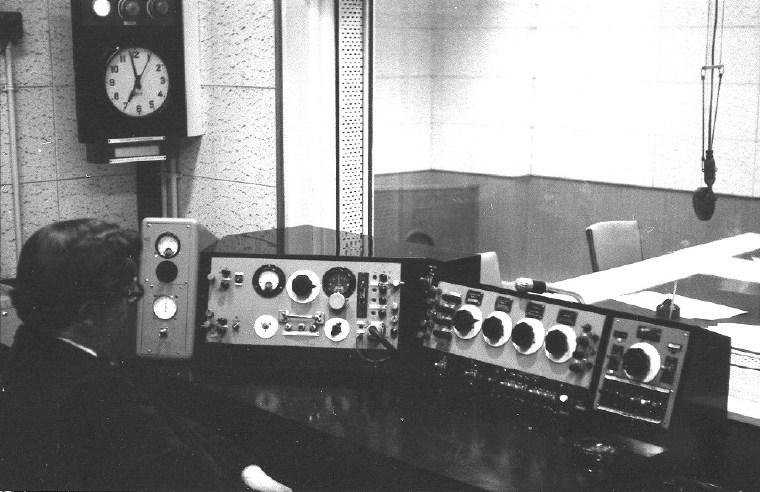

When the BBC Overseas Service moved into Bush House at the start of the Second World War, there was a shortage of studio mixing desks because of the sudden expansion. As a stop-gap measure a number of 1938 vintage outside broadcast mixers - the OBA8 - were installed.

The BBC at that time made its equipment last... these desks were still in use thirty years later - I've made programmes on the wretched things, and I took the photo above in January 1969. The desk is much as it was when it was installed: the outrigger panel on the extreme left was added in the 1960s to accomodate the tape machines which were then being installed in studios. The small microphone over the mixer was added around that time for the Studio Manager to make the short announcement which preceded most transmissions (previously there had been a ribbon microphone slung over the gramophones). The microphone in the studio is an ST&C 4038 ribbon - when the desk was first installed it would probably have been the much larger AXBT ribbon microphone.
Although the main amplifier (valves, of course) was very good and much quieter than many later desk designs, the mixing was done at low level: that is, the microphone outputs were fed straight into the mixing controls without amplification, and the outputs of these controls mixed without the use of buffer amplifiers. The result was that not only were the controls very prone to noise when you moved them, but fading up one channel lowered the level of anything else faded up at the time.
To make working them more difficult, there was no transmission talkback, to allow the Studio Manager to talk to the studio while recorded inserts were being played. This led to considerable skills in mime as instructions were passed back and forth. Try asking someone 'which tape do you want next?' without being able to talk to them.
Starting around 1969 these desks were finally removed and replaced with Bush House's first transistorised desks, which brought their own set of interesting problems - that's another story.
